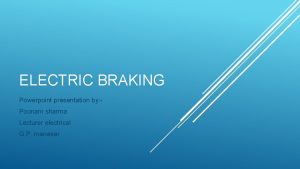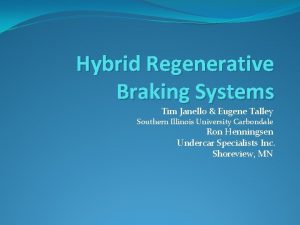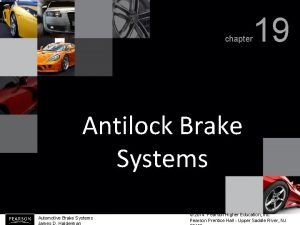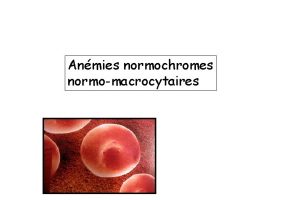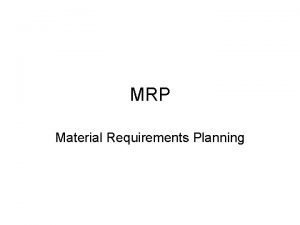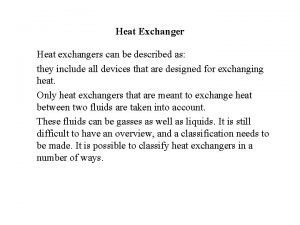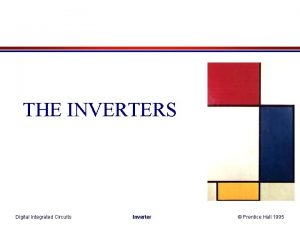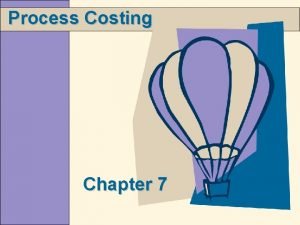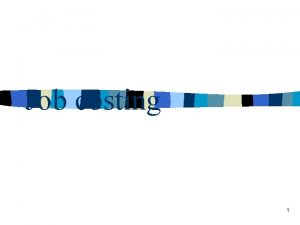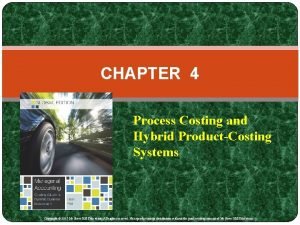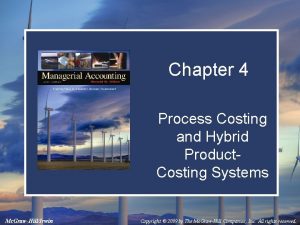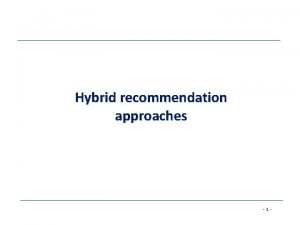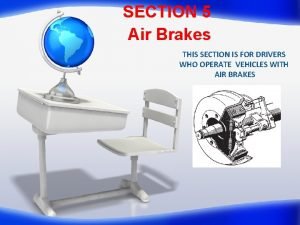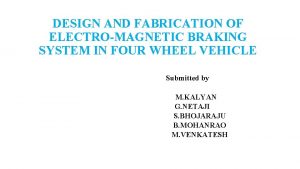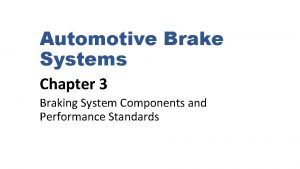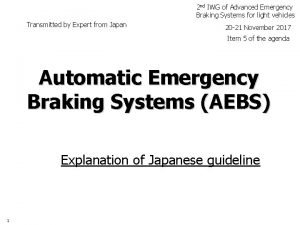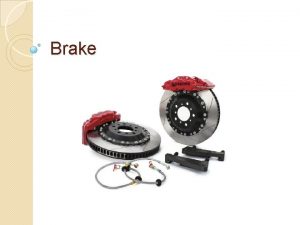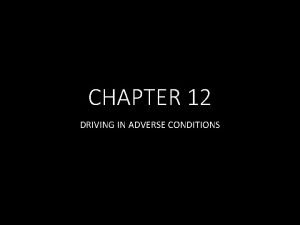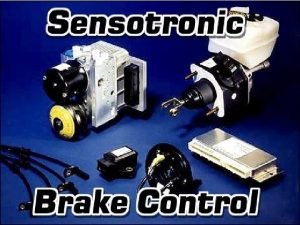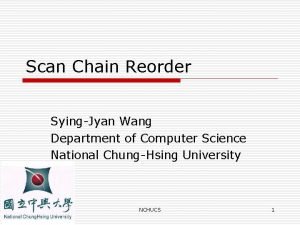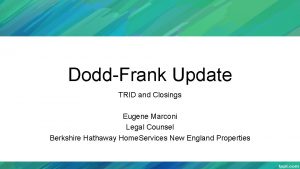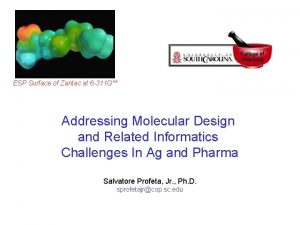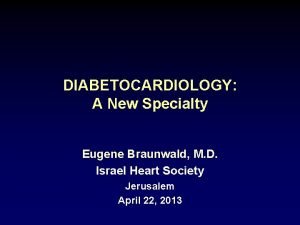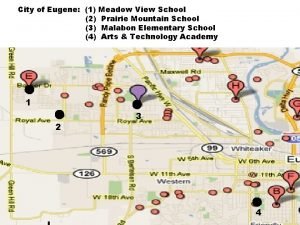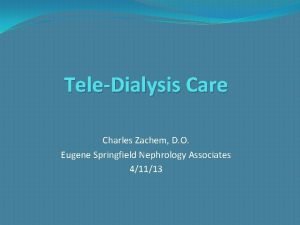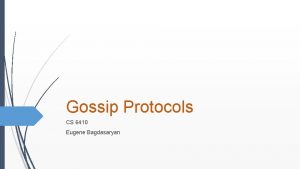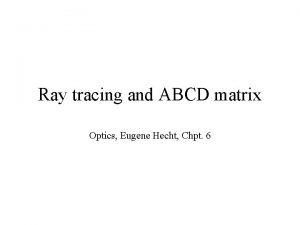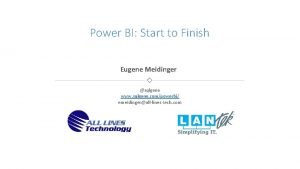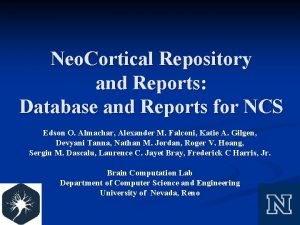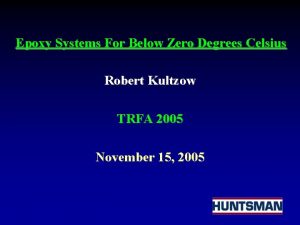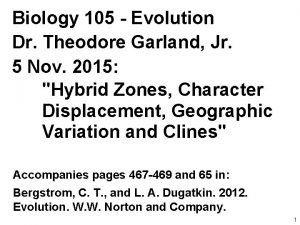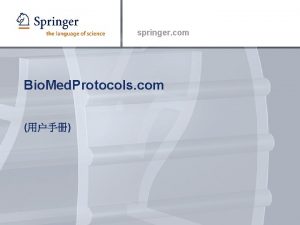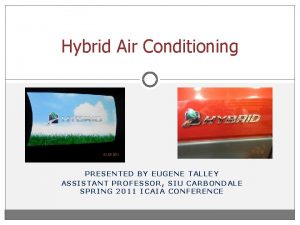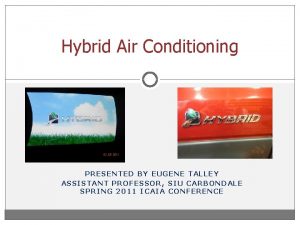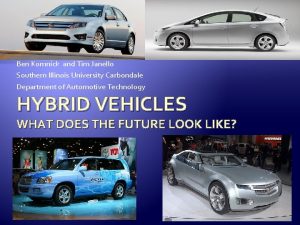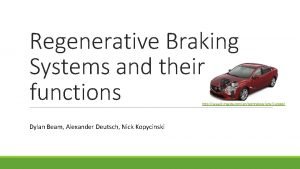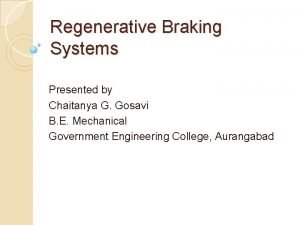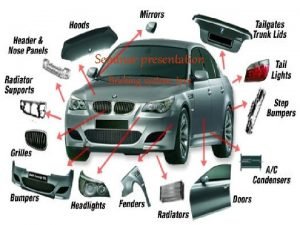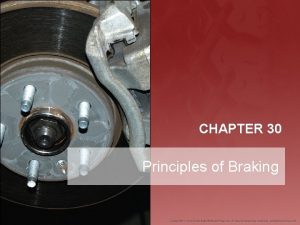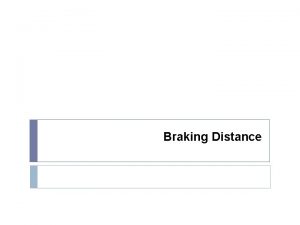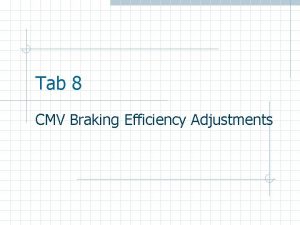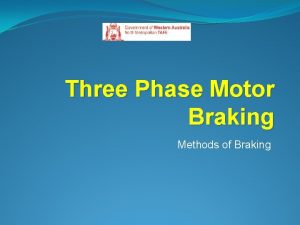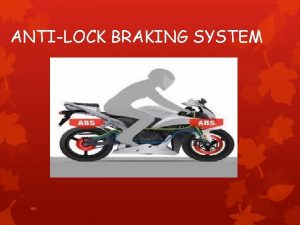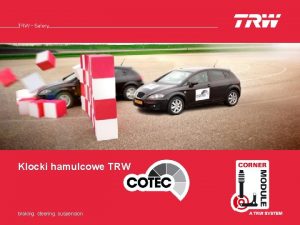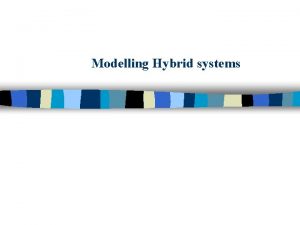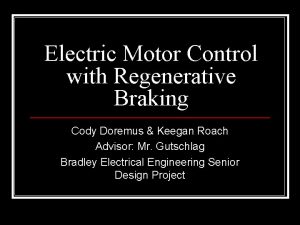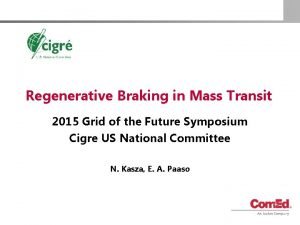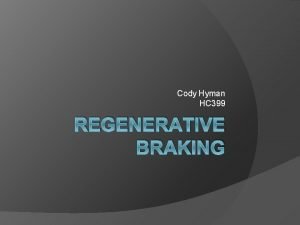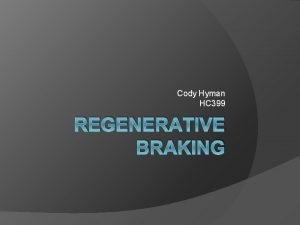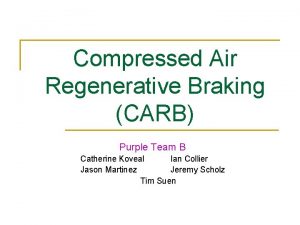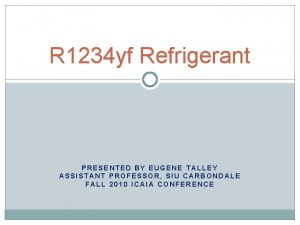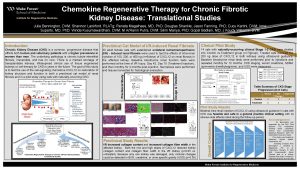Hybrid Regenerative Braking Systems Tim Janello Eugene Talley

Hybrid Regenerative Braking Systems Tim Janello & Eugene Talley Southern Illinois University Carbondale Ron Henningsen Undercar Specialists Inc. Shoreview, MN

Topics �Manufacturers: �Toyota �Ford �Honda �GM �Hybrid Brake System Overview �Hybrid Communication Network �Hybrid Brake Components �Hybrid Regen/Hydraulic Brake Interaction �Hybrid Safety �Hybrid Foundation Brake Service/Issues 2

Brake Pad Delamination �Do You “Know” why this is a Hybrid Issue? 3

Brake Rotor Friction �Do You “Know” why this is a Hybrid Issue? 4

Brake Fluid………. . �Do You “Know” why this is a Hybrid Issue? 5

“Ready” Mode Hybrid Drive System/ICE On 6

Hybrid Brake System Overview 7

Toyota Hybrid Systems (THS & THS II) �Generation I Ø ’ 01 – ’ 03 Prius �Generation II �’ 04 – ’ 09 Prius �’ 06 –’ 09 Highlander (4 WD)/Camry �Ford Escape ’ 05 -’ 09 �Nissan Altima ’ 07 – ‘ 09 8

Toyota System Comparisons ’ 01 – ’ 03 Prius ’ 04 & later Prius Highlander Hybrid Regenerative Brake Cooperative Control Hydraulic Brake Booster Electronically Controlled Braking (ECB) ABS w/ EBD - Enhanced VSC (S-VSC) VSC - Brake Assist - - TRAC - - Vehicle Dynamics Integrated Management 9

Regeneration/Motor Functions �MG 1 �Recharges HV battery (w/ICE running) �Provides Power for MG 2 �Control CV output to wheels �ICE starter motor �MG 2 �Regeneration Braking/Charging HV Battery �Drive Wheel Motor 10

Honda Integrated Motor Assist �IMA Generator/Motor Assembly �ICE runs anytime brake pedal is NOT applied. 11

12

Hybrid Regeneration 13

Toyota Hybrid Systems Communication 14

AUX. Battery ABS 1 Relay ABS 2 Relay ABS 1 Motor Relay ABS 2 Motor Relay Brake Control Power Supply Parking Brake Switch Pump Motor Accumulator Pressure Sensor Linear Solenoids Changeover Solenoids Wheel Cylinder Pressure Sensors Master Cylinder Pressure Sensor Stop Light Switch Wheel Speed Sensors Skid Control ECU Brake Pedal Stroke Sensor Electric Steer ECU Hybrid ECU Steering Angle Sensor Yaw/Decel Sensor Actuator Master Cylinder Stroke Simulator Cutvalve Brake Fluid Reservoir Warning Switch Gateway ECU Skid Control Buzzer Speedometer Instrument Panel Warning Indicators 15

Honda Communication Schematic 16

17

Toyota Brake System Components 18

Brake Pedal Stroke Sensor Relays pedal depression speed / angle 19

Stroke Simulator Cut Valve Closed Cut-valve open 20

’ 08 Highlander Skid Control ECU 21

Toyota Hydraulic System Brake Operation 22

23

Normal Brake Actuation Fluid Reservoir Stroke Simulator Master Cylinder Driver’s Brake Input Cut Valve High Pressure Pump Acc. Pressure Sensor MC Pressure Sensor 2 MC Pressure Modulated Pressure High Pressure Brake Fluid Dump Fluid MC Pressure Sensor 1 Changeover Solenoid 2 Drawing Legend Accumulator LF Apply Linear Solenoid LF Dump Solenoid LF Wheel Pressure Sensor LF Caliper RR Apply Linear Solenoid RR Dump Solenoid RF Apply Linear Solenoid LR Dump Solenoid RF Dump Solenoid RR Wheel Pressure Sensor RR Caliper LR Apply Solenoid LR Wheel Pressure Sensor RF Caliper LR Caliper 24

Fluid Reservoir Closed Stroke Simulator Fail Safe Mode Driver’s Brake Input Master Cylinder Cut Valve High Pressure Pump Changeover Solenoid 2 Acc. Pressure Sensor MC Pressure Sensor 2 Open Changeover Solenoid 1 Drawing Legend Accumulator LF Apply Linear Solenoid LF Dump Solenoid LF Wheel Pressure Sensor LF Caliper MC Pressure Modulated Pressure High Pressure Brake Fluid Dump Fluid MC Pressure Sensor 1 RR Apply Linear Solenoid RR Dump Solenoid RF Apply Linear Solenoid LR Dump Solenoid RF Dump Solenoid RR Wheel Pressure Sensor RR Caliper LR Apply Solenoid LR Wheel Pressure Sensor RF Caliper LR Caliper 25

Ratio of Regen to Hydraulic “Normal Stop” 26

Ratio of Regen to Hydraulic “Panic Stop” 27

Ford Escape Hydraulic Brake System Operation 28

Ford Escape Hydraulic Brakes 29

Honda Braking System 30

Honda Integrated Assist Braking �Master Cylinder is operated by hydraulic boost. �ABS HCU/foundation brakes work the same as any other. 31

Brake Pedal Input 32

Master Cylinder Regulation 33

Fail-Safe 34

GM “Mild Hybrid” Brakes 35

GM Mild Hybrid Hydraulic Brakes V BEC Sol Enable Line SOL 2 PWR PEB ECM SOL 1 Control GM LAN PWM Res. M/C + BAT SOL 1 PWR P Booster Sol 2 Sol 1 SOL 2 Control Sec ABS Module Sol 1 – Left front, Right rear Sol 2 – Right front, Left rear Pri RF (sec) LR LF (PRI) RR 36

GM Hill Hold System �Used to halt Vehicle movement until Accelerator pedal is applied. �Small delay of vehicle movement until ICE starts. 37

GM Two-Mode Hydraulics 38

General Hybrid Safety 39

This Type of Surprise is NOT Good! �DO NOT FORGET! Turn the ignition Off. �On Toyota/Ford type systems, the engine may not be running when you pull the vehicle in, but may start at any time. �Can you imagine the surprise for a tech who has the oil drained and the engine decides to start? 40

Early Prius Gen II �Tip: If you encounter a 2004 and newer Toyota Prius that will not shut down, it may be due to a malfunction in the shift control actuator. Appling the parking brake, something we should do anyway, should allow the vehicle to shut down while in park or neutral. 41

Caution: High Voltage �The High Voltage system is marked by the orange cables, but should be discharged after five (5) minutes with the ignition off. They are sealed to prevent contact, but always look for insulation damage before touching. � With the Ignition “Off” and the key or I-key removed (stored 15 feet away from vehicle) the High Voltage is normally disabled. �Blue Cables are 36 -42 Volt Systems. �Always Wear “HV” Safety Equipment when disconnecting service plugs just to be Safe! 42

2009 Silverado Hybrid Inverter High Voltage Orange Cables 43

HV Battery Disconnects 44

Toyota Prius HV Service Disconnect. Located in front left of rear cargo area. 45

Toyota Highlander HV Service Disconnect Located under left side of rear seat. 46

Honda Civic HV Service Disconnect Located behind rear seatback. To gain access, Remove metal cover plate. HV Battery cover removed. 47

Ford Escape HV Service Disconnect Located under right rear of cargo mat. 48

GM Vue Hybrid 49

2009 GM Two-Mode Hybrid 50

‘ 05 -’ 09 Ford Escape Hybrid Brake Service Brake Issues Brake Service Brake Bleeding 51

Brake Fluid All use Standard DOT 3 Fluid. Honda Civic Escape Highlander 52

Ford Escape Hybrid Brake Issues �Basic vehicle braking is by the regenerative braking of the hybrid system �In a normal stop the hydraulic system comes in about 3 – 7 mph. �Brake noise is somewhat common at this time. �Pads don’t normally get enough use to “seat in” or establish a “transfer layer”. 53

Service Safety Procedures �Because the Regenerative Braking System can check/checks the integrity of the brake system at various times when the vehicle is parked. �And it develops brake pressure for short periods of time when doing so. �You should realize that opening the door may/usually triggers this check. �You must to enter the Pad Service Mode to service brakes & disable the self check mode. � This prevents brake pressure from being applied. 54

Ford Escape Hybrid Brake Service � To safely replace the brake pads you must… � Enter Pad Service mode by performing the following: 1. Apply and hold the Brake Pedal. 2. Place the vehicle in Park. And turn the ignition to run. Continued next slide 55

Ford Escape Hybrid Brake Service � Enter Pad Service mode continued: 3. Turn the ignition OFF and then ON three times with in three (3)seconds. Leave the ignition on with last key cycle. 4. Then release the brake pedal. 5. Brake warning lamp flashes while stored pressure is released. 6. Brake warning lamp is on constant when pressure is released from the system. 7. Lamp will flash if the brakes are applied. 56

Ford Escape Hybrid Brake Service �Other ways of entering the Pad Service Mode �Disconnect the battery and remove the battery junction box (BJB) fuses #24 (50 amp) and #31 (50 amp). � The problem with this method is what happens to all of your memory items, radio, garage door codes etc. 57

Ford Escape Hybrid Brake Service �Other ways of entering the Pad Service Mode continued: �Use a scan tool and the correct software to enter “Pad Service Mode” selection of menu. 58
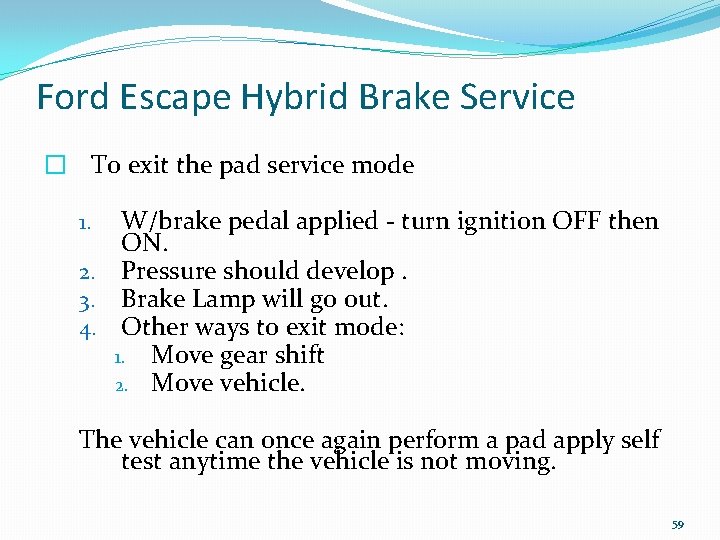
Ford Escape Hybrid Brake Service � To exit the pad service mode W/brake pedal applied - turn ignition OFF then ON. 2. Pressure should develop. 3. Brake Lamp will go out. 4. Other ways to exit mode: 1. Move gear shift 2. Move vehicle. 1. The vehicle can once again perform a pad apply self test anytime the vehicle is not moving. 59

Ford Escape Hybrid Conventional Foundation Brakes Bleeding �Provided you have not opened the hydraulic system i. e. . Caliper replacement, run dry, blown hose etc. you can bleed the system in a regular manner. �Conventional pedal pump method or standard pressure bleeding. 60

Ford Escape Hybrid Conventional Foundation Brakes Bleeding (continued) �Bleeding sequence: RR, LF, RF �Do not allow the system to run dry or you will have to have the system bled using the special Ford tools. �Use only High Performance DOT 3 fluid. 61

Escape Master Cylinder Screw Clamps Other clamps leaked? 62
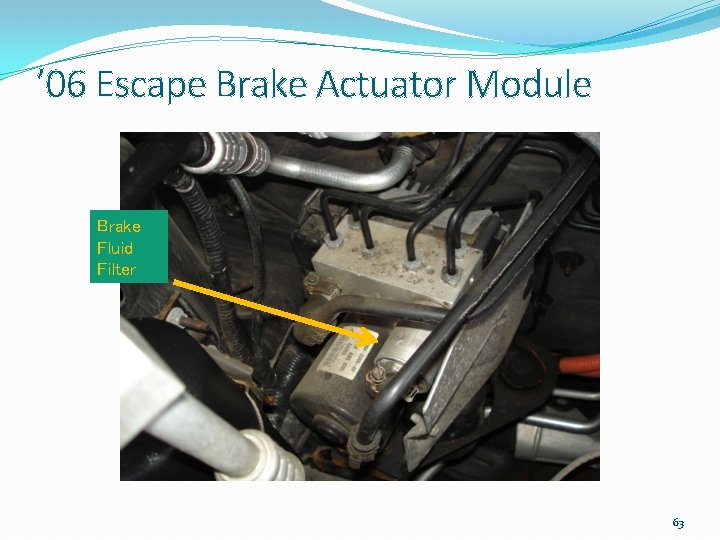
’ 06 Escape Brake Actuator Module Brake Fluid Filter 63
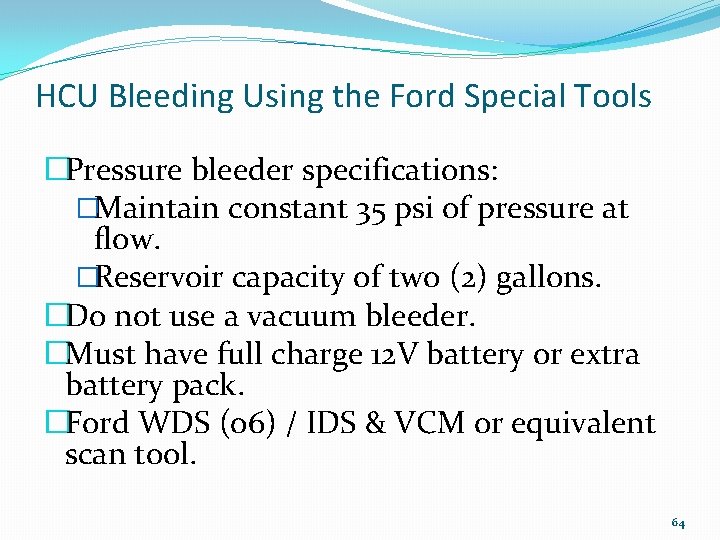
HCU Bleeding Using the Ford Special Tools �Pressure bleeder specifications: �Maintain constant 35 psi of pressure at flow. �Reservoir capacity of two (2) gallons. �Do not use a vacuum bleeder. �Must have full charge 12 V battery or extra battery pack. �Ford WDS (06) / IDS & VCM or equivalent scan tool. 64
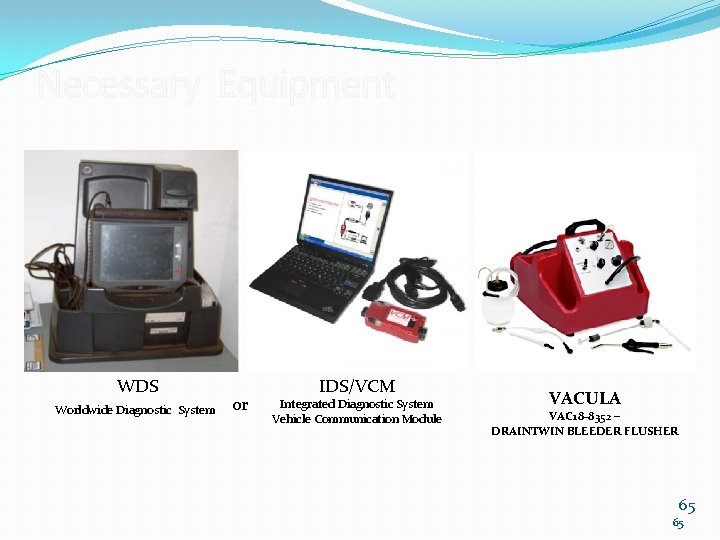
Necessary Equipment WDS Worldwide Diagnostic System or IDS/VCM Integrated Diagnostic System Vehicle Communication Module VACULA VAC 18 -8352 – DRAINTWIN BLEEDER FLUSHER 65 65

Replacing the HCU With Original Module Available 1. 2. 3. 4. 5. 6. 7. 8. 9. Connect the WDS or IDS and ID the vehicle as normal. From Toolbox , Select & Highlight Module Programming Press the check mark. Select & Highlight Programmable Module Installation. Follow the on-screen instructions, turn the ignition key to the OFF position, and press the check mark. Install the new module and press the check mark. Follow the on-screen instructions, turn the ignition key to the ON position, and press the check mark. The module configuration is complete. Test the module for correct operation 66
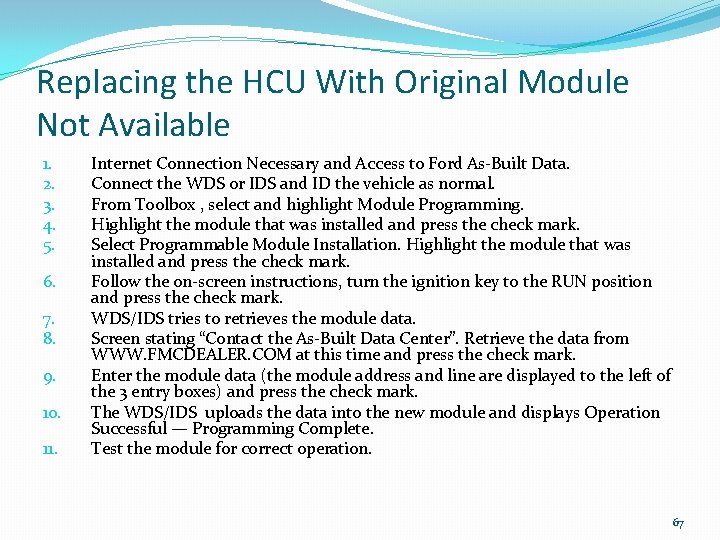
Replacing the HCU With Original Module Not Available 1. 2. 3. 4. 5. 6. 7. 8. 9. 10. 11. Internet Connection Necessary and Access to Ford As-Built Data. Connect the WDS or IDS and ID the vehicle as normal. From Toolbox , select and highlight Module Programming. Highlight the module that was installed and press the check mark. Select Programmable Module Installation. Highlight the module that was installed and press the check mark. Follow the on-screen instructions, turn the ignition key to the RUN position and press the check mark. WDS/IDS tries to retrieves the module data. Screen stating “Contact the As-Built Data Center”. Retrieve the data from WWW. FMCDEALER. COM at this time and press the check mark. Enter the module data (the module address and line are displayed to the left of the 3 entry boxes) and press the check mark. The WDS/IDS uploads the data into the new module and displays Operation Successful — Programming Complete. Test the module for correct operation. 67
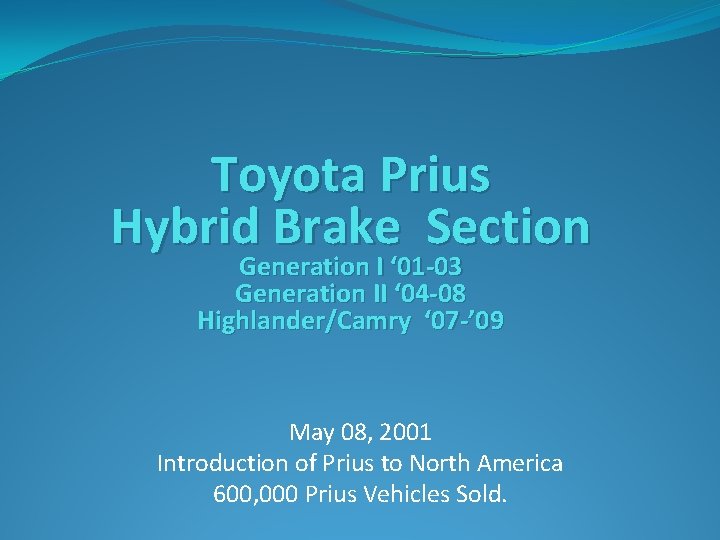
Toyota Prius Hybrid Brake Section Generation I ‘ 01 -03 Generation II ‘ 04 -08 Highlander/Camry ‘ 07 -’ 09 May 08, 2001 Introduction of Prius to North America 600, 000 Prius Vehicles Sold.

Toyota Prius Pad Replacement �Frequently (always) the Brake/ABS light will be illuminated after pad replacement. �Knowing why is important �Knowing how to clear the problem is even more important �Knowing an alternative method is Important. 69
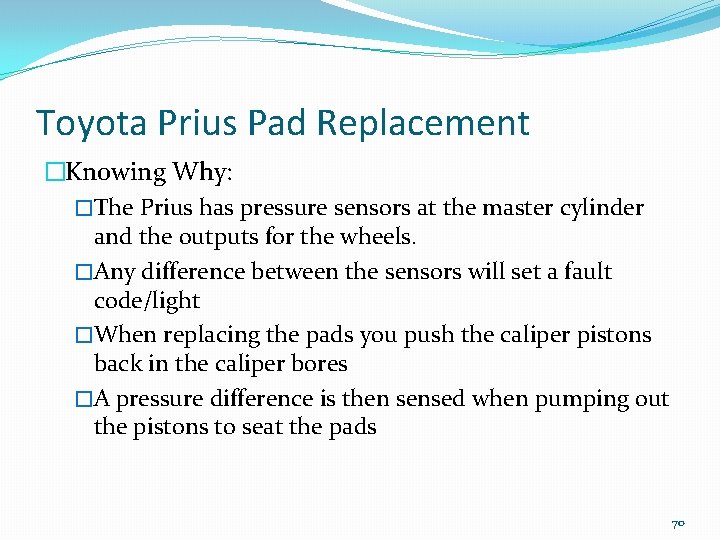
Toyota Prius Pad Replacement �Knowing Why: �The Prius has pressure sensors at the master cylinder and the outputs for the wheels. �Any difference between the sensors will set a fault code/light �When replacing the pads you push the caliper pistons back in the caliper bores �A pressure difference is then sensed when pumping out the pistons to seat the pads 70
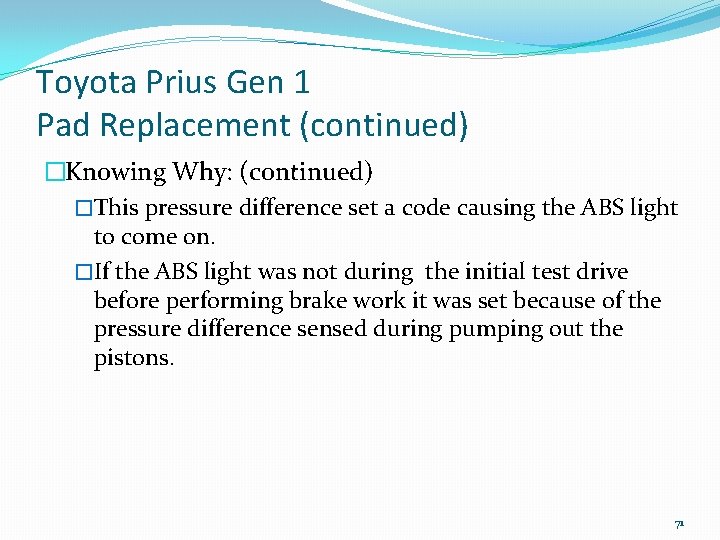
Toyota Prius Gen 1 Pad Replacement (continued) �Knowing Why: (continued) �This pressure difference set a code causing the ABS light to come on. �If the ABS light was not during the initial test drive before performing brake work it was set because of the pressure difference sensed during pumping out the pistons. 71
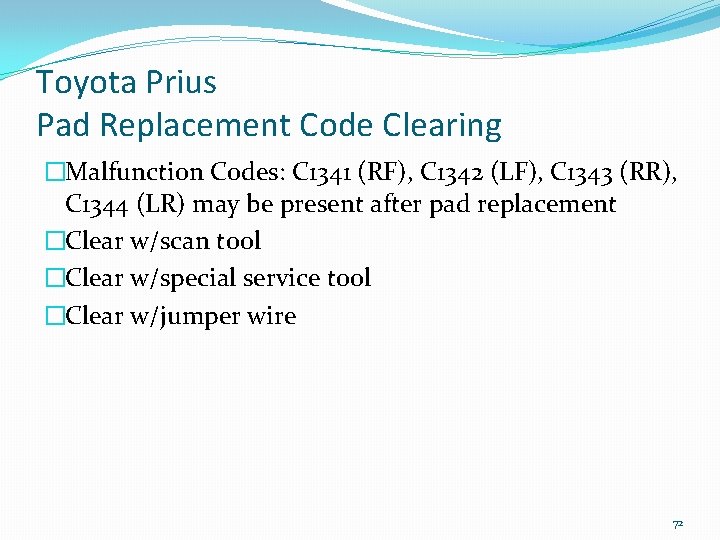
Toyota Prius Pad Replacement Code Clearing �Malfunction Codes: C 1341 (RF), C 1342 (LF), C 1343 (RR), C 1344 (LR) may be present after pad replacement �Clear w/scan tool �Clear w/special service tool �Clear w/jumper wire 72
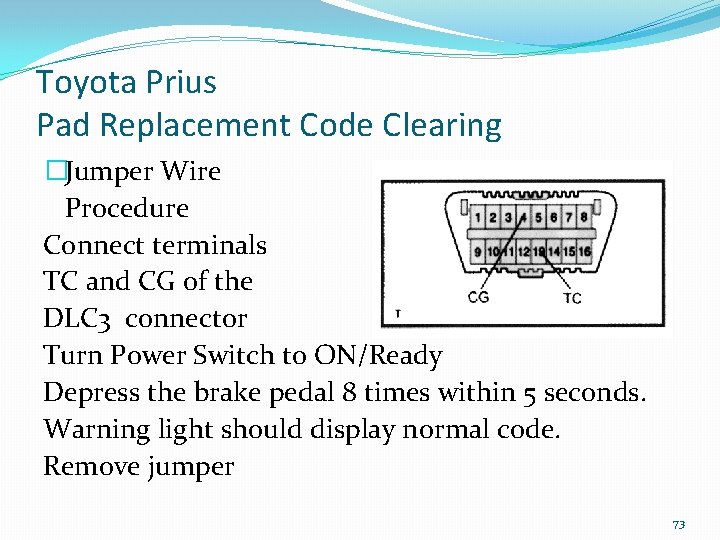
Toyota Prius Pad Replacement Code Clearing �Jumper Wire Procedure Connect terminals TC and CG of the DLC 3 connector Turn Power Switch to ON/Ready Depress the brake pedal 8 times within 5 seconds. Warning light should display normal code. Remove jumper 73
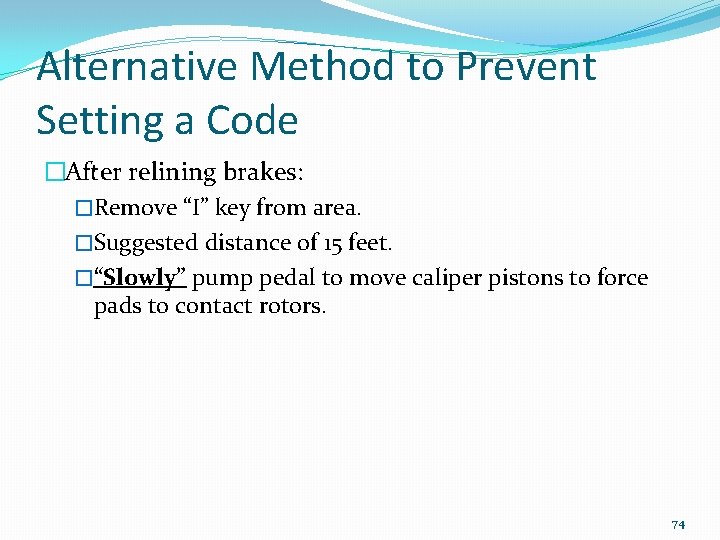
Alternative Method to Prevent Setting a Code �After relining brakes: �Remove “I” key from area. �Suggested distance of 15 feet. �“Slowly” pump pedal to move caliper pistons to force pads to contact rotors. 74
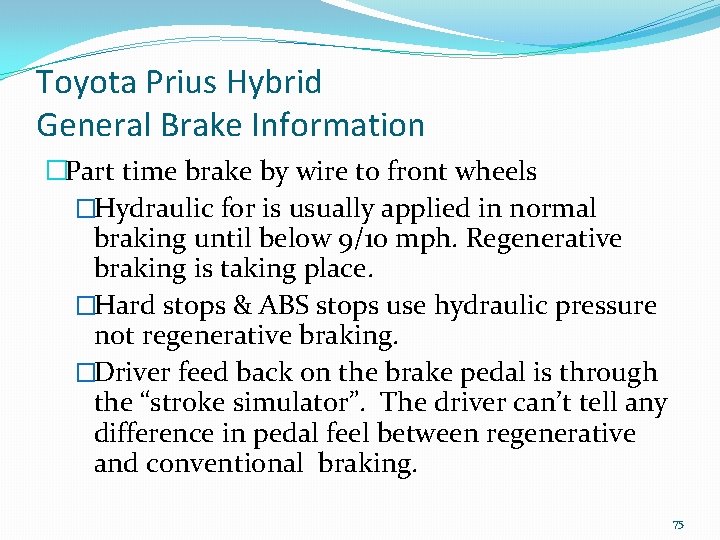
Toyota Prius Hybrid General Brake Information �Part time brake by wire to front wheels �Hydraulic for is usually applied in normal braking until below 9/10 mph. Regenerative braking is taking place. �Hard stops & ABS stops use hydraulic pressure not regenerative braking. �Driver feed back on the brake pedal is through the “stroke simulator”. The driver can’t tell any difference in pedal feel between regenerative and conventional braking. 75

Toyota Prius Hybrid General Brake Information �When in a engine off parked mode hydraulic pressure is still in the brake system. �Prius can/does drive without using the ICE. �The ICE may start at any time to charge the HV battery or operate the HVAC. �Remove electronic key away from vehicle during service (oil change especially!) 76
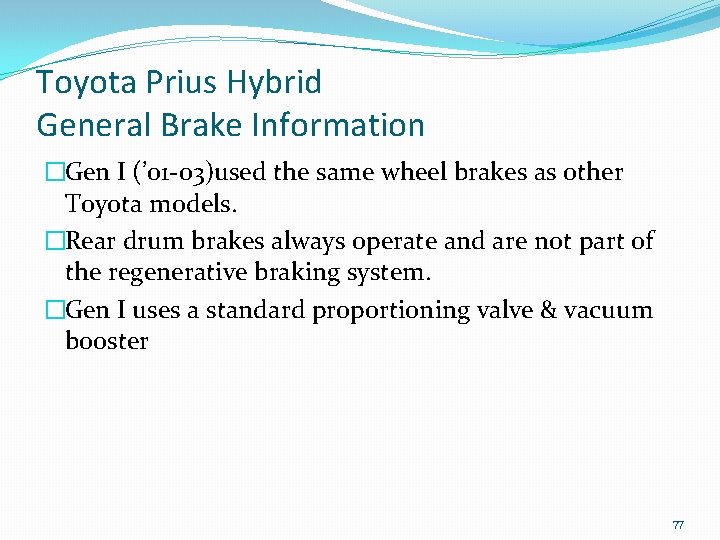
Toyota Prius Hybrid General Brake Information �Gen I (’ 01 -03)used the same wheel brakes as other Toyota models. �Rear drum brakes always operate and are not part of the regenerative braking system. �Gen I uses a standard proportioning valve & vacuum booster 77

Toyota Prius Hybrid General Brake Information �Generation II (’ 04 -07) Parking Brake Problem �Parking Brake light remains on after parking brake has been released. �TSB BR 002 -07 (replace parking brake pedal assembly). 78
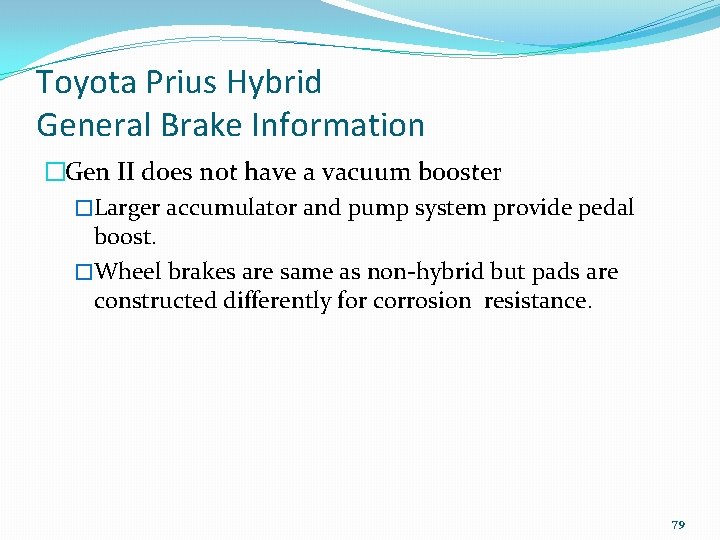
Toyota Prius Hybrid General Brake Information �Gen II does not have a vacuum booster �Larger accumulator and pump system provide pedal boost. �Wheel brakes are same as non-hybrid but pads are constructed differently for corrosion resistance. 79
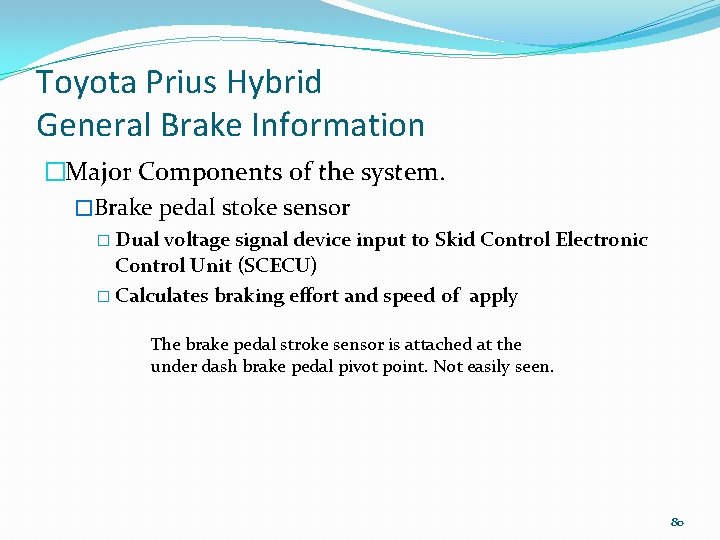
Toyota Prius Hybrid General Brake Information �Major Components of the system. �Brake pedal stoke sensor � Dual voltage signal device input to Skid Control Electronic Control Unit (SCECU) � Calculates braking effort and speed of apply The brake pedal stroke sensor is attached at the under dash brake pedal pivot point. Not easily seen. 80
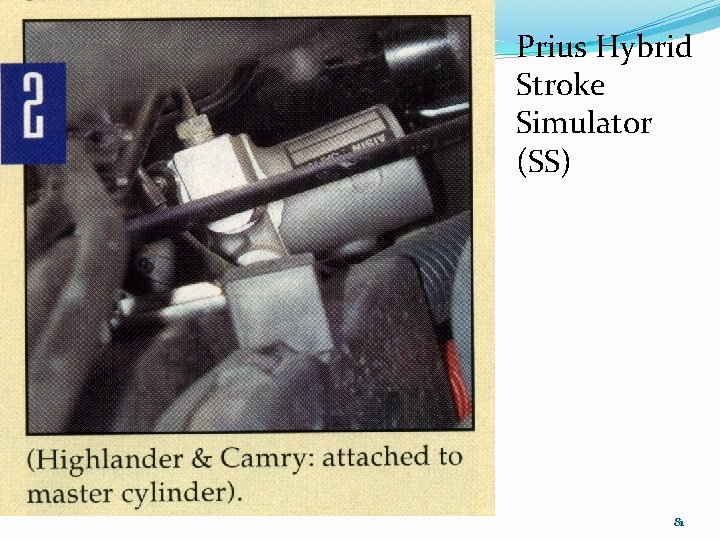
Prius Hybrid Stroke Simulator (SS) 81
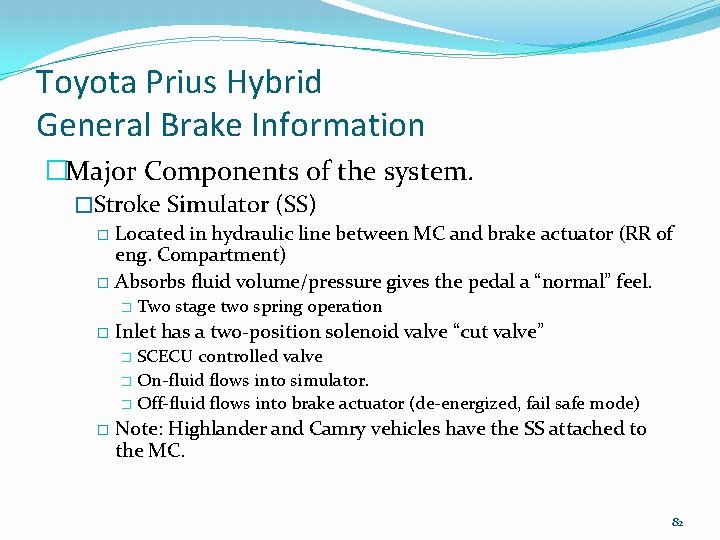
Toyota Prius Hybrid General Brake Information �Major Components of the system. �Stroke Simulator (SS) � Located in hydraulic line between MC and brake actuator (RR of eng. Compartment) � Absorbs fluid volume/pressure gives the pedal a “normal” feel. � � Two stage two spring operation Inlet has a two-position solenoid valve “cut valve” SCECU controlled valve � On-fluid flows into simulator. � Off-fluid flows into brake actuator (de-energized, fail safe mode) � � Note: Highlander and Camry vehicles have the SS attached to the MC. 82
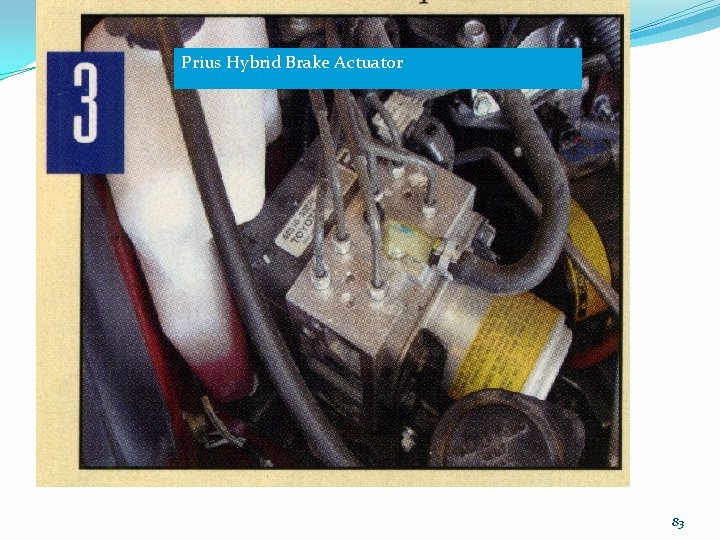
Prius Hybrid Brake Actuator 83

Toyota Prius Hybrid General Brake Information �Major Components of the system. �Brake Actuator � Located between the SS and the Calipers. Bolted to firewall mid area. � Contains the high pressure pump, accumulator, pressure sensors & solenoid valves (linear and changeover). � Functions Control: � ABS, Vehicle Stability Control, Brake Assist Controller. � Delivers fluid pressure as commanded by the SCECU 84
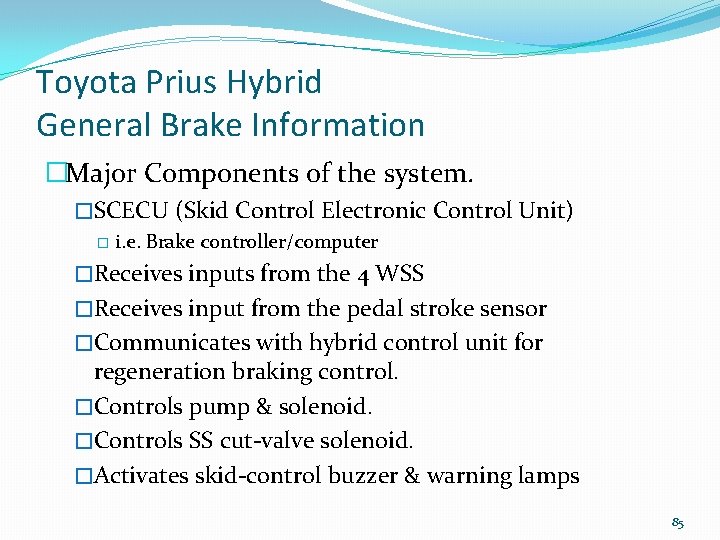
Toyota Prius Hybrid General Brake Information �Major Components of the system. �SCECU (Skid Control Electronic Control Unit) � i. e. Brake controller/computer �Receives inputs from the 4 WSS �Receives input from the pedal stroke sensor �Communicates with hybrid control unit for regeneration braking control. �Controls pump & solenoid. �Controls SS cut-valve solenoid. �Activates skid-control buzzer & warning lamps 85
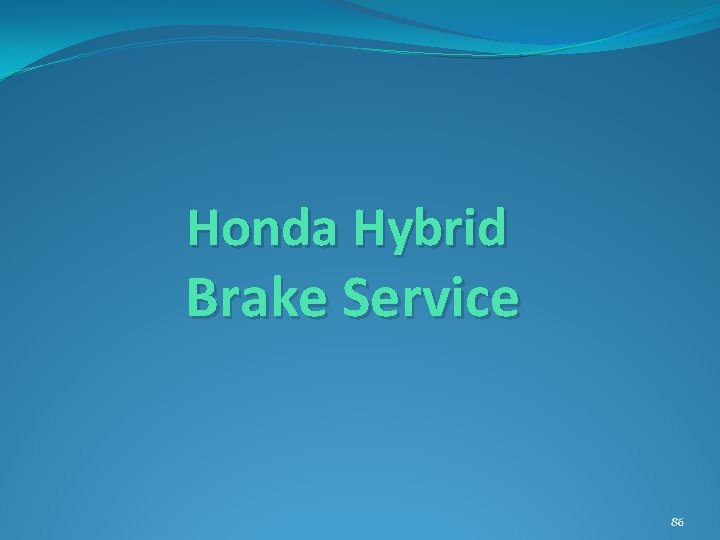
Honda Hybrid Brake Service 86
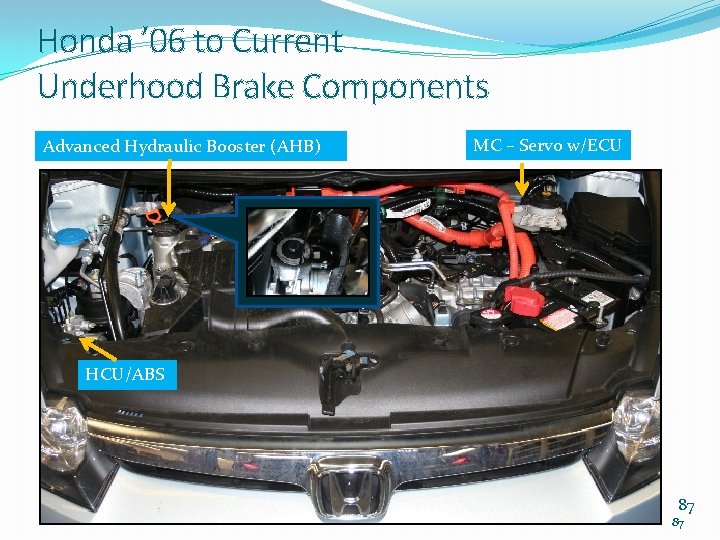
Honda ’ 06 to Current Underhood Brake Components Advanced Hydraulic Booster (AHB) MC – Servo w/ECU HCU/ABS 87 87
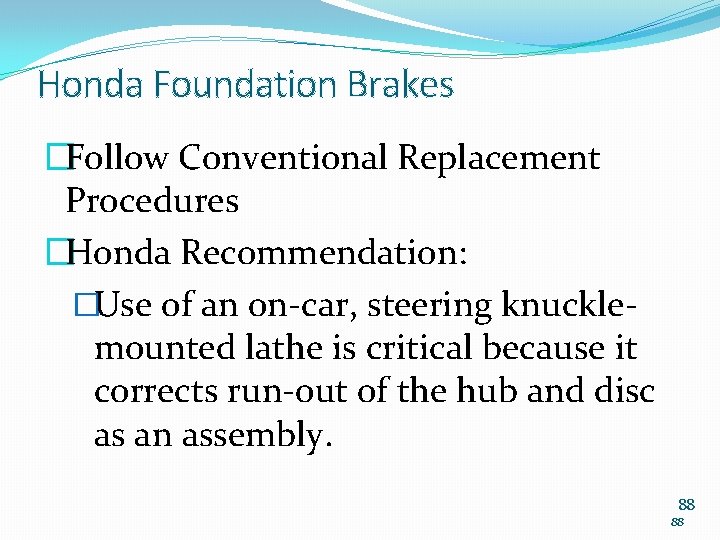
Honda Foundation Brakes �Follow Conventional Replacement Procedures �Honda Recommendation: �Use of an on-car, steering knucklemounted lathe is critical because it corrects run-out of the hub and disc as an assembly. 88 88
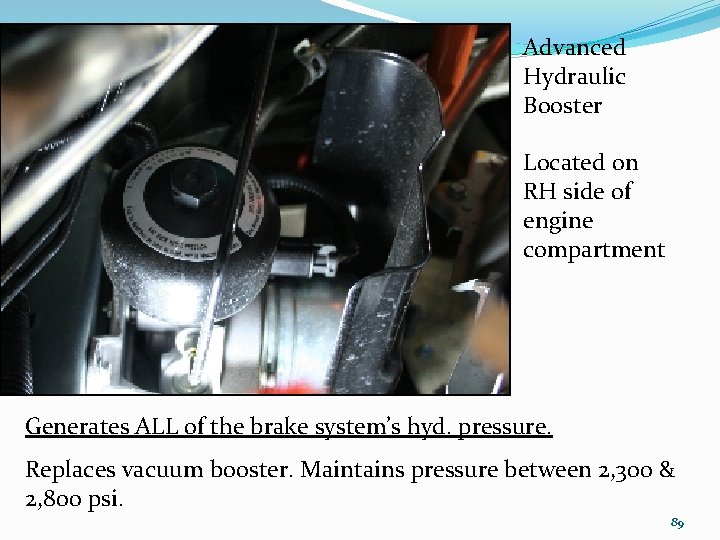
Advanced Hydraulic Booster Located on RH side of engine compartment Generates ALL of the brake system’s hyd. pressure. Replaces vacuum booster. Maintains pressure between 2, 300 & 2, 800 psi. 89
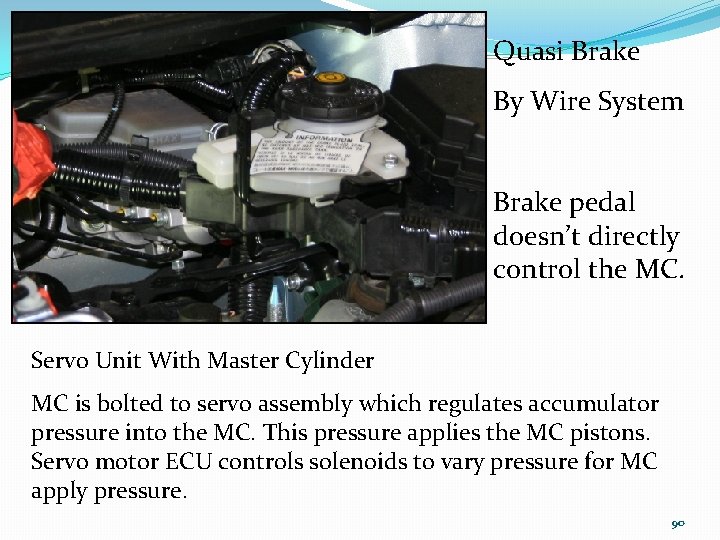
Quasi Brake By Wire System Brake pedal doesn’t directly control the MC. Servo Unit With Master Cylinder MC is bolted to servo assembly which regulates accumulator pressure into the MC. This pressure applies the MC pistons. Servo motor ECU controls solenoids to vary pressure for MC apply pressure. 90

The servo unit, MC & servo unit ECU are integrated. Brake pedal doesn’t directly press on MC pistons but it can/does apply pressure in fail safe mode. 91

Servo Unit with MC. Pg. 2, Civic 2006 handout info. NO normally open NC normally closed RNO (regen) normally open RNC (regen) normally closed 92
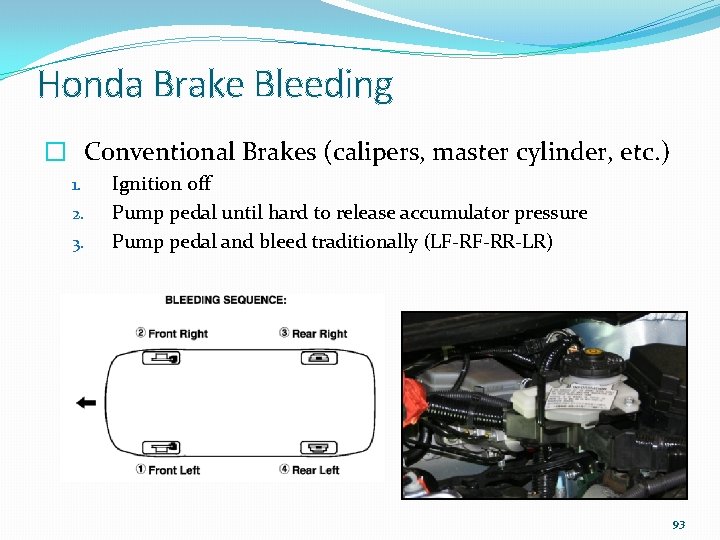
Honda Brake Bleeding � Conventional Brakes (calipers, master cylinder, etc. ) 1. 2. 3. Ignition off Pump pedal until hard to release accumulator pressure Pump pedal and bleed traditionally (LF-RF-RR-LR) 93

Honda High Pressure Bleeding 1. Attach a clear hose to the bleeder under the servo assembly. 2. Open the bleed screw about 180 degrees. 3. Turn the ignition to run. 4. Allow Pump to discharge brake fluid from the reservoir for one (1) minute. 5. Note: Don't operate the pump for more than 110 seconds, or you can overheat it. 6. Tighten bleeder screw once no air is found discharging through the tube. 7. Turn the ignition switch off. 8. Fill the fluid reservoir to the middle line. 94
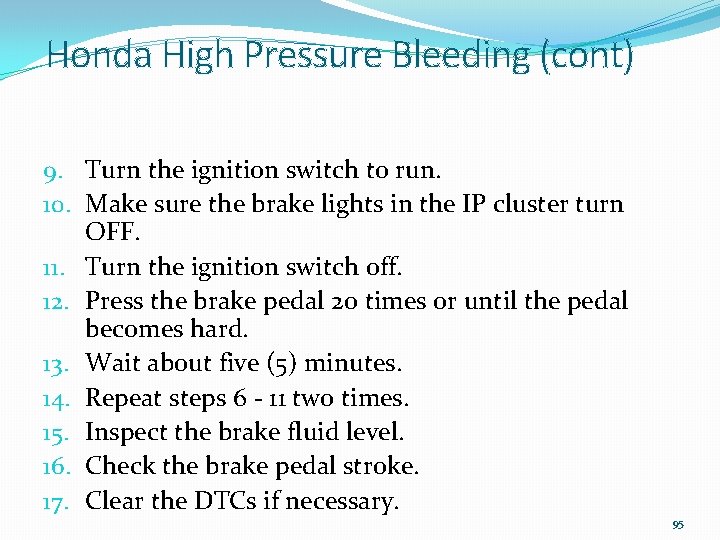
Honda High Pressure Bleeding (cont) 9. Turn the ignition switch to run. 10. Make sure the brake lights in the IP cluster turn OFF. 11. Turn the ignition switch off. 12. Press the brake pedal 20 times or until the pedal becomes hard. 13. Wait about five (5) minutes. 14. Repeat steps 6 - 11 two times. 15. Inspect the brake fluid level. 16. Check the brake pedal stroke. 17. Clear the DTCs if necessary. 95
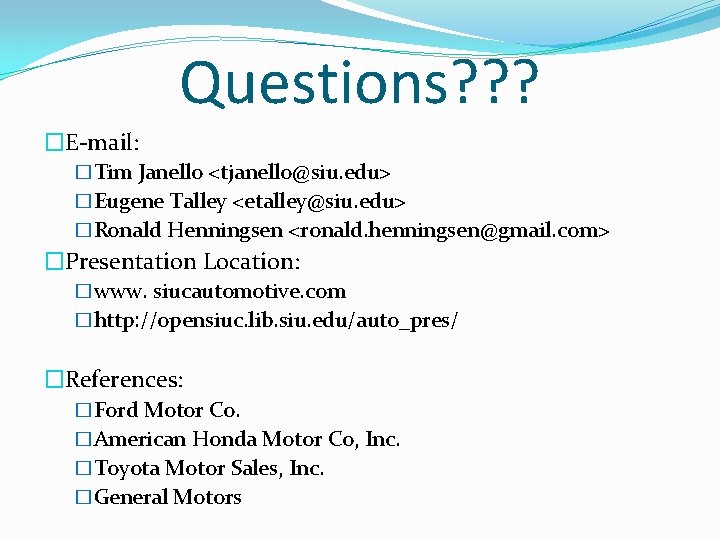
Questions? ? ? �E-mail: �Tim Janello <tjanello@siu. edu> �Eugene Talley <etalley@siu. edu> �Ronald Henningsen <ronald. henningsen@gmail. com> �Presentation Location: �www. siucautomotive. com �http: //opensiuc. lib. siu. edu/auto_pres/ �References: �Ford Motor Co. �American Honda Motor Co, Inc. �Toyota Motor Sales, Inc. �General Motors
- Slides: 96
